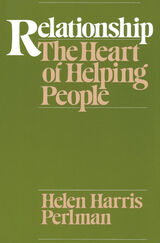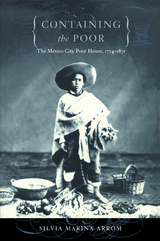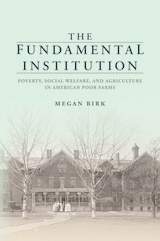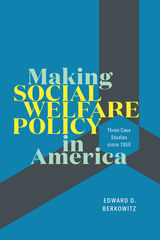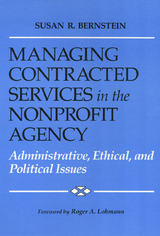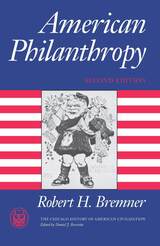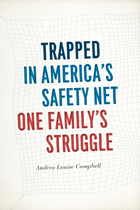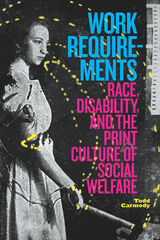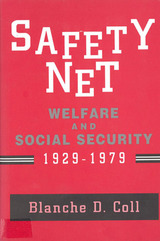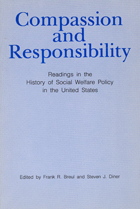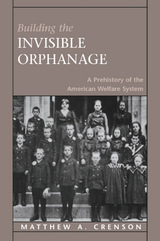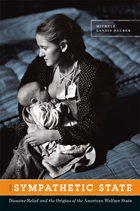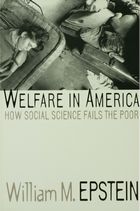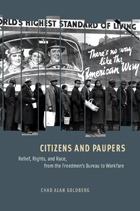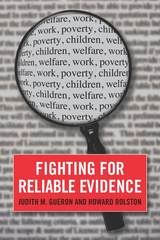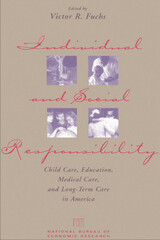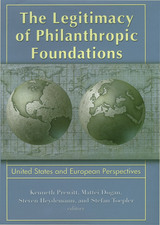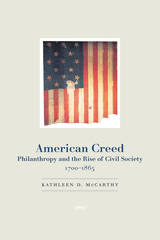“A marvelous, deeply researched history of the largely forgotten role of federal disaster relief in the historical development of the American welfare state. Michele Landis Dauber shows very creatively how the Great Depression came to be understood as a single, monolithic event—as a disaster—that justified new and expansive forms of relief. Political scientists and historians will have to contend with her central argument: that the New Deal was less the product of a ‘constitutional revolution’ than ordinary lawyering from long-settled precedents.”
— Michael Willrich, author of Pox: An American History
“In difficult economic times, how can a nation mobilize support for the relief of poverty? Michele Dauber's The Sympathetic State illuminates this question in an original and powerful way. Studying Franklin Delano Roosevelt's political rhetoric and his use of the arts during the New Deal, Dauber shows that the construction of public sympathy is a complicated task, involving fact-based reasoning, but also involving the emotions and the imagination. Roosevelt was not just a canny social planner, he was also a genius of the heart. And that, Dauber's analysis implies, is what we sorely need today. This is an important, valuable, and amazing book.”
— Martha C. Nussbaum, University of Chicago
"The Sympathetic State forces fundamental revisions in how we think about the history of America’s welfare state. Contrary to what almost all other historians have written, Michele Landis Dauber’s brilliant book demonstrates that, since the earliest days of the nation, the Constitution has provided through its General Welfare clause a powerful justification for frequent extensions of federal cash relief and for constructing the nation’s welfare state. This is history with a crucial message for the American public as well as for historians."
— Michael B. Katz, University of Pennsylvania, author of The Price of Citizenship
“The Sympathetic State is a revisionist history for our contested present. As Dauber masterfully shows, the more than two-hundred-year history of federal disaster relief indicates that national social policies fit comfortably with longstanding American constitutional traditions. You cannot fully understand current debates—or where they might yet go—until you read this book.”
— Jacob Hacker, Yale University, author of The Divided Welfare State
"Now comes a study that might've helped Obama build his narrative bridge between crisis and reform. In The Sympathetic State, Stanford University professor Michele Landis Dauber looks at the stories Franklin Delano Roosevelt and his allies told in order to sell the New Deal—to the public, sure, but also to a harsher audience, the Supreme Court, which would end up deciding its fate."
— Chicago Reader
"What is important about Michele Landis Dauber's work is to point out that debates over disaster relief have been part and parcel of American politics from the beginning."
— Sanford Levinson, University of Texas Law School
"In the wake of the October storm, no one was in the mood to talk about privatization or 'austerity' in the context of disaster relief. A one-time fierce critic of President Obama, New Jersey's governor Chris Christie greeted the president warmly and toured devastated regions with him. And in November, Christie said New Jersey would seek $29.4 billion in federal disaster aid. This episode underscored the thesis of a new book by Michele Landis Dauber, The Sympathetic State. Dauber argues that, despite American enthusiasm for laissez-faire economics and reputation for flinty individualism, disaster relief, when we are talking about individuals blamelessly stricken, has been popular with every section of the country, and among every population, literally from the beginning of the Republic. What's more, she argues that the moral logic of disaster relief has historically spilled over into other areas, shaping our constitutional history and public policies far more than most scholars have acknowledged."
— Chronicle of Higher Education
"We learn in The Sympathetic State that Congress dispensed federal funds in more than one hundred resolutions to help citizens recover from disaster or other circumstances beyond their control, from the Whiskey Rebellion of 1794 to the 1827 Alexandria Fire. With these precedents in mind, Roosevelt and others argued that the Depression was a “disaster” and that relief was constitutional and the morally right thing to do. Superbly written and researched, The Sympathetic State deserves the highest praise for bringing the welfare conversation full circle."
— ForeWord
“Among the notable events of 2012 were Hurricane Sandy and the Supreme Court decision upholding Obamacare. The two did not seem to have much in common. Yet there is a deep historical linkage between the welfare state (in this case Obamacare), constitutional law (the Supreme Court’s decision to uphold that law), and natural disaster. In her new book, The Sympathetic State, Michele Landis Dauber does not discuss these events directly, but her research allows us to see some surprising connections.”
— Dan Farber, Washington Monthly
“This book complements the literature on the US welfare state by situating its origin with disaster relief appropriations that Congress authorized beginning after the inception of the nation. Countering explanations positing the welfare state as an abrupt departure from constitutional precedent finally approved by the Supreme Court during the New Deal, Michele Landis Dauber argues convincingly that public relief had long been authorized through the General Welfare Clause and details how New Deal lawyers focused on disaster relief in constructing an incremental argument for various provisions of the Social Security Act. Highly recommended."
— Choice
“In this meticulously researched new book, Michele Landis Dauber challenges the conventional narrative, uncovering a long history of federal disaster relief preceding the New Deal. . . . The Sympathetic State resonates well beyond its pages, suggesting that the perceived moral culpability of claimants largely determines the viability of claims to government resources. Dauber’s narrative and the central insight it contains should be of special interest to policymakers and legal thinkers alike.”
— Harvard Legal Review
“One can’t help but admire Dauber’s craft: she masterfully blends social, cultural, political, and legal history to tell a story that feels both fresh and fundamentally correct. . . . This is legal history at its best.”
— Legal History Jotwell
“Dauber’s book is a model of historical sociology. . . . For students and scholars of the U.S. welfare state, it will be an indispensable and provocative resource. For students of historical sociology, it is a lesson in how to build a multifaceted case for a simple, but wide-reaching, argument, treating several types of historical materials in several important institutional settings. . . . Her analysis of the New Deal adds a great deal of texture to more recent critical histories, such as Ira Katznelson’s When Affirmative Action was White, and analytic heft to cultural analyses of policy, such as is found in the work of Anne Ingram and Helen Schneider. She further shows us that our paradoxical and often-unequal welfare state is rooted in a contradictory tradition that spans judicial, legislative, and even popular consciousness.”
— Qualitative Sociology
"Dauber's recovery of this history of disaster relief and her new reading of the significance of the general welfare clause are both fascinating and impressive."
— American Historical Review
“Given the breadth of research on the origins of the American welfare state, it can mark a significant scholarly achievement to uncover anything new on the topic—let alone to identify missing pieces that challenge conventional understandings. Yet in Dauber’s The Sympathetic State, we are treated to such an innovative book. . . . [Dauber’s] keen insights will make this profound book a matter of serious inquiry and a source for political inspiration for many years to come.”
— International Journal of Social Welfare
“Dauber's argument is fresh, well-supported, clearly articulated and powerfully suggests an emerging historiography of nineteenth-century government that emphasizes its surprising activism with a more established historiography on the limits of the New Deal. Where another historian surveying the history of American disaster relief might instinctively look for turning points and crystallizing moments, Dauber, a law professor, looks for persistent patterns, exploring the fundamental character of the American political regime. The author's analysis to the quasi-judicial approach that Congress has brought to the task of evaluating relief claims is fascinating and largely persuasive.”
— Historian
“In her fascinating analysis, Dauber . . . trace[s] the way disasters are defined initially as deriving from natural causes outside the control of human beings, such as fires, floods, hurricanes, and so on, and then she brilliantly documents how welfare advocates succeeded in expanding that definition to include economic emergencies for which there appears to be no ‘natural’ cause. . . . There is much to admire about The Sympathetic State. . . . It is a new and valuable way to think about welfare policies and the American state, and it is written in a clear, concise, and readable style. It will enhance the perspectives for everyone seeking to explain American political development, constitutional law, the New Deal, and welfare provision as a continuing though not last step in this endeavor.”
— Perspectives on Politics

